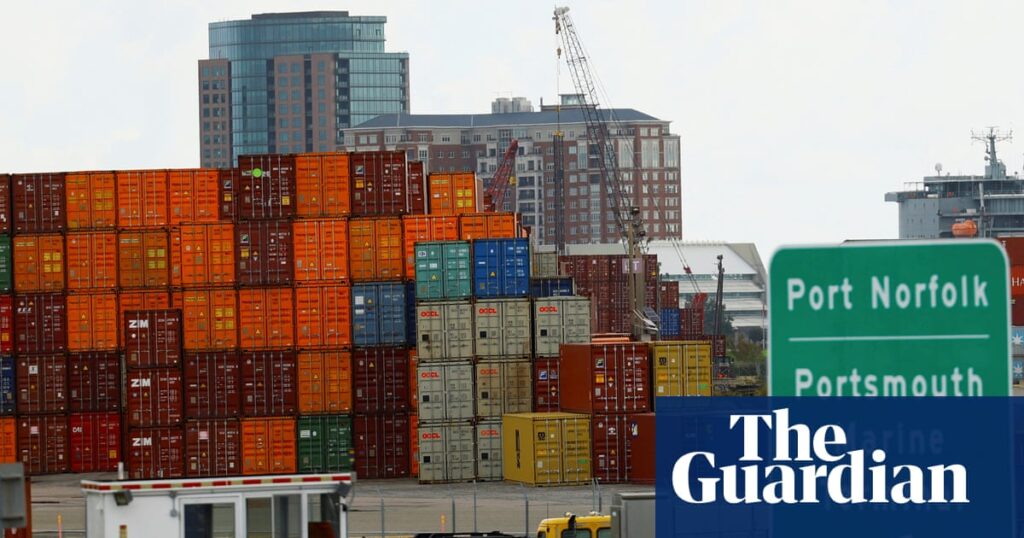The Biden administration breathed a sigh of relief Thursday as the union representing longshoremen called off a strike that threatened massive disruption of goods weeks before the November election.
But the dispute between the International Longshoremen’s Association (ILA) and the nation’s port authorities is far from over, and whoever wins the White House could precipitate its first political crisis in January. be.
The agreement to cease industrial action expires on January 15, and the ILA could take further action if a new contract is not agreed by then. Its impact can be felt all over the world.
As many Americans have learned during the pandemic, supply chains are somewhat fragile.
Imported goods made overseas are packed into giant shipping containers and travel by sea to reach American shores. Upon arrival at the port, the containers are unloaded from the ship and placed in a warehouse. Products are transported to their destinations by truck or train.
If any part of the chain is interrupted, there can be ripple effects.
That’s why the longshoremen’s strike that began on Tuesday has become such a big deal. Goods shipped to U.S. East Coast or Gulf Coast ports could not be transported until the strike was called off.
This dockside strike, the first since 1977, probably resulted in economic losses of at least $5 billion per day.
The ILA, which represents 45,000 workers across 36 ports, is calling for higher wages and a ban on automation and semi-automation at ports as job protection measures.
The union and the United States Maritime Alliance (USMX), a consortium of carriers and terminal operators, have reportedly reached a tentative agreement to increase wages by 62% over six years. Other issues, including automation, remain open.
As negotiations continue, we will learn more about what is at stake for the U.S. economy.
The strike ended after three days. what happened?
For most Americans, the impact of the strike was minimal.
Keeley Croxton, a logistics professor at Ohio State University, said companies have been aware of the possibility of a strike for at least several weeks and have been ramping up shipments and unloading containers even before the strike. .
What happens if a new strike lasts for more than a few weeks?
Goods entering the Eastern and Gulf Coast ports are primarily cargo from Europe and Central and South America. The strike does not affect cruise ships or military cargo.
This means that if the strike lasts for more than two weeks, some fresh fruits and vegetables transported in refrigerated containers may be the first to be affected. For example, many of the bananas consumed in the United States come from Central and South America. If the supply of bananas already passing through ports begins to dwindle, it could affect inventory at grocery stores.
But economists say only certain parts of grocery store shelves may disappear.
“It would be selective in the first place,” said Michael Pearce, deputy chief U.S. economist at Oxford Economics. “The broader macro impact won’t start to increase until this continues for a very long time.” . “Once we start having a strike lasting three to four weeks, that’s when we start to see a more sustained period of disruption, and we may need to start worrying in terms of wider ramifications for the economy.”
If the strike continues for more than a few weeks, carriers may try to start shipping cargo from West Coast ports. Pearce said price hikes could occur as carriers pass those costs on to consumers.
Economists stress that the impact of the strikes will be different from those seen during the pandemic. The pandemic saw widespread shortages, first caused by panic buying and then even as lockdowns disrupted parts of the supply chain.
Croxton said businesses will be better prepared for this than they were for the pandemic. “Companies have learned from the pandemic, developed stronger sourcing and distribution strategies, and found ways to respond more flexibly to such disruptions.”
How will it affect other workers?
Pearce said workers in other industries within the supply chain may be most directly affected. As the number of products flowing through the supply chain decreases, so do the jobs.
“Jobs that rely on large volumes of goods coming in through ports, such as warehousing logistics and transportation wholesalers, will be disrupted,” Pearce said. “If this continues for more than a week, we will start to see reports of furloughs and layoffs in these areas.”



